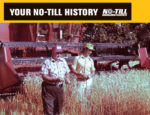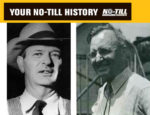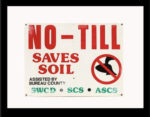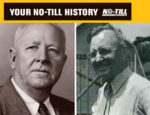Advertise Follow Us
No-Till History Articles & News
No-till was a ‘no-go’ until modern weed-control chemicals arrived on the scene.
Read More
North Carolina Shares in No-Till History, Too
Kentucky isn’t the only state to mark a no-till first. North Carolina claims one of its own farmers also put their no-till crop in during 1962.
Read More
Timeline of Herbicide Developments
As weed-control products came of age in the decades after World War II, no-tillage was given a chance to become a viable practice.
Read More
Timeline of the No-Till Revolution
Thousands of small but compounding victories spurred no-till’s growth from 0 to 110 million acres in 60 years.
Read More
Squaring Away Generational Differences on the Plow
The great-grandson of Walter T. Jack provides a personal yet conflicted history on the famed debate that defended and condemned the plow.
Read More
‘No-Till Saves Soil’ Sign Considered Part of American History
No-till sign is displayed at the National Museum of American History in Washington, D.C.
Read More
What Ever Happened to the Legendary Allis-Chalmers’ No-Till Planter?
Landoll Corp. acquired Allis-Chalmers landmark no-till innovation in 1993 and rebranded it as the Quadra-Planter.
Read More
No-Till’s First Prophets
Two ‘founding fathers’ were instrumental in setting the stage for no-tillage, yet never got to see it in practice before their deaths.
Read More













